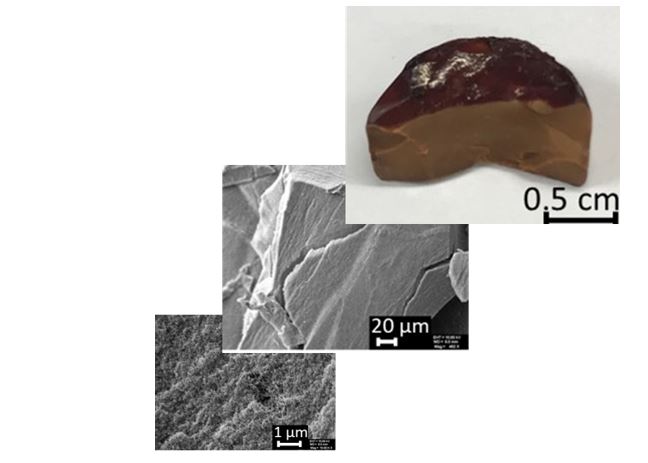Graphical Abstract

Abstract
Demand of the carbon in its different forms is measured in million metric tons and market is estimated to amount of several billions of Euros. Carbon materials have good chemical stability and environmental adaptability, what makes them applicable in various areas, like water treatment and purification; gas purification and separation; adsorbents for pollutants removal; catalyst support; electrodes for batteries and supercapacitors.
Biomass is considered more and more as green source for carbon nanostructured materials and very active research is going on to use biomass-derived porous carbon as the electrode material in the field of electrochemistry, as well as in the field of catalysis as supports for catalysts and even catalysts itself. The main reason beside chemical and thermal stability and good conductivity is in their well-defined and uniform structures with specific surface area, pore structure and pore size what can be tuned according to needs of particular application [1].
Lignin being the most abundant natural source of aromatics is considered valuable resource to build new chemicals and materials - resins and polymers particularly, and its phenolic nature makes it potential replacements for phenol/resorcinol in a multitude of industrial operations. In many studies phenolic resins and resorcinol aerogels are mainly considered as a useful source for porous carbon material [2] and here despite that lignin’s are less reactive towards addition/substitution reactions due to the lack of reactive sites, the phenol replacement with lignin would give very high economy.
Our studies show that organosolve lignin extraction process gives material that has good reactivity to form gel with formaldehyde (FA), and it was possible to produce from aspen, pine, and barley lignins with the small addition of 5-methyl resorcinol (5-MR) (25% to 15%) organic aerogels with relatively high surface area from 350 to 450 m2/g. Additional pre-treatment of the precursor lignin with NaOH allows increase the solubility of the lignin and this way enhance gelation process. Also, it was demonstrated that nanocellulose, what is side product in this kind of lignin separation can be used for composite aerogels. The obtained lignin-based organic aerogels were further used as raw material for porous carbon aerogels with remarkable structural parameters [3].
Keywords
Biomass, lignin, aerogel; carbon.
Acknowledgement
This study was supported by ERDF and Estonian Research Council via project RESTA11; also, by COST Action “Advanced Engineering and Research on AeroGels for Environment and Life Sciences” (AERoGELS, ref. CA18125) funded by the European Commission.
References
- P. Jõul, M. Vaher, M. Kuhtinskaja, Anal. Methods 2021, 13.
- F. Pérez-Caballero, A.L. Peikolainen, M. Uibo, R. Kuusik, O. Volobujeva, M. Koel, Microporous Mesoporous Mater., 2008, 108.
- P. Jõul, T. T. Ho, U. Kallavus, A. Konist, K. Leiman, O.S. Salm, M. Kulp, M. Koel, T. Lukk, Materials, 2022, 15, 8.
Biography
FRSC Mihkel Koel graduated Tartu State University (1967-1972) on specialty of physics. After postgraduate studies at Institute of Chemistry of Estonian Academy of Sciences, he defended the candidate’s dissertation (PhD) in analytical chemistry at Leningrad State University (now St. Petersburg, Russia) in 1989.
He had long term scientific visits to Duke University and Los Alamos National Laboratory (USA), Helsinki University (Finland), also short-term visits to University of Nottingham (UK).
At the moment he is a lead research scientist at Tallinn University of Technology (Estonia) in Department of Chemistry and Biotechnology. His interests include such area of analytical chemistry as separation science, use of neoteric solvents, and green analytical chemistry. He has more than 90 published papers and over 70 presentations on international conferences.
Video Proceedings of Advanced Materials

Upcoming Congress



